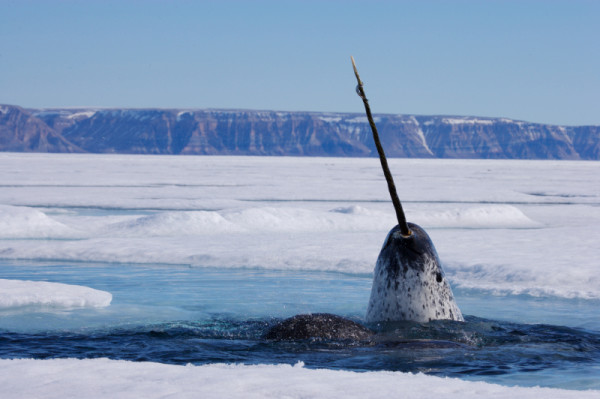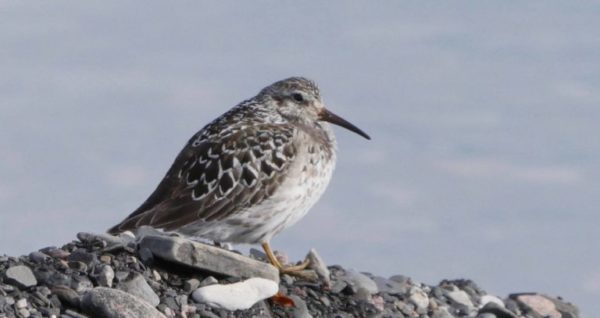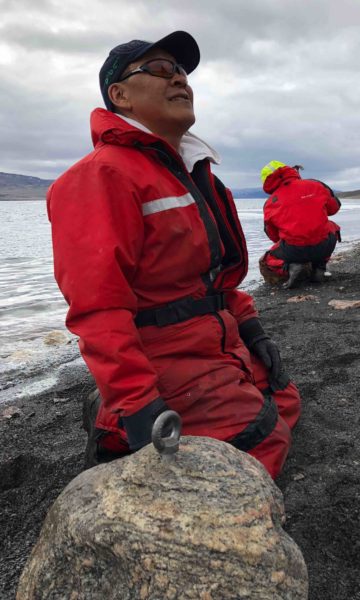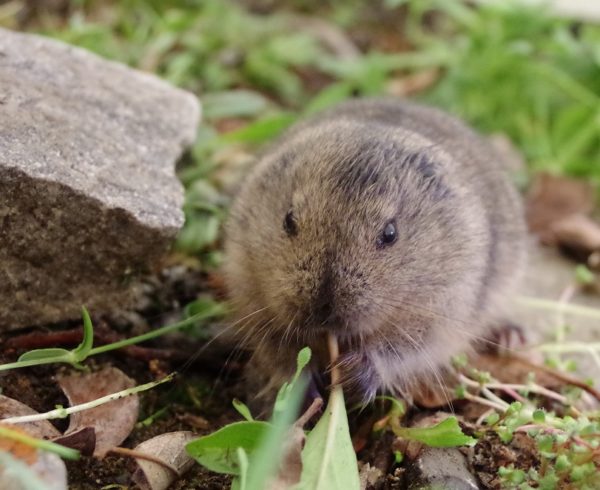Welcome to Narwhal Camp
Researchers in Canada’s Far North are using drones, hydrophones and other technology to learn more about little-understood narwhals, in the third year of a project supported by WWF-Canada’s Arctic Species Conservation Fund.

After setting up camp with the others in Tremblay Sound in Nunavut, biologists Tom Arnbom and Melanie Lancaster started sharing dispatches from the field (including one about a surprise visitor in their tent):

July 25: Polar bear watch
We are all now in the swing of keeping watch for polar bears throughout the night in shifts while the camp sleeps. During the night the wind shifted, and we woke to heavy snowfall. Snow in the middle of summer…it was freezing cold! The heavy snow lasted all morning and coated the tents, plants and nearby mountaintops in a white blanket.

One of the world’s toughest shore birds, the purple sandpipers, paid us a visit this afternoon. Ducking under the huge sheets of ice stranded on the beach, the pair looked to be enjoying the sunshine when it finally broke through late this afternoon as much as we did. Energy levels in the camp are high as we continue to wait eagerly for the narwhals to arrive.
July 26: Narwhal spotting
One, two, three, how many are there? First we hear their breath as they break the water’s surface. The still water reflects the mountains and the ice like a mirror. We feel so privileged to be here. We wish you could all be here, too.

Suddenly a group swims by, so close to shore that we can almost reach out and touch them. A tusk emerges out of the water – likely how the myth of the unicorn began. Narwhals do not have a fin on their backs so they can easily swim amongst the sea ice. The calves are dark grey, becoming more speckled with age. They don’t take notice of us as they travel past, seemingly intent on their destination. Now our adventure really starts! Narwhals galore!
July 27: Mic check
With the arrival by helicopter of the last two members of the team, it’s all systems go to put final touches on the underwater monitoring systems in Tremblay. Remote field work needs lots of innovation and practical skills. As an example, how do you find anchors in the Arctic? Rocks, of course! Rocks are perfect natural anchors that sink our underwater microphones to the dark depths of Tremblay Sound.

These microphones are our ears under the water all year round and give us clues about what’s happening here long after we’ve left this fantastic place.

The midnight sun never sleeps in summer at Tremblay and neither does the camp. We don’t know what tomorrow will bring but for now, we watch and wait.

July 28: A new team member
In the midst of an Arctic rainstorm, a new team member joins us. The cutest in camp, this tiny lemming, or avinngaq in Inuktitut, has taken shelter from the howling winds and horizontal rain – in our tent vestibule. At the time of her discovery she was so engrossed in voraciously eating Arctic flowers and leaves that she ignored us big two-footed animals!

There are several species of lemming in the Arctic and they are one of the most important foods for predators. They are so numerous because they can breed under the snow in the dark Arctic winter. During lemming peaks, the number of Arctic foxes and snowy owls soar. Even the caribou benefit from lemming droppings, which help to fertilize the Arctic tundra where they graze. This delightful little fur ball has been welcomed by all into camp.
For more updates from Narwhal Camp, check back next week – or follow us on Twitter and Instagram for individual dispatches as we receive them.
